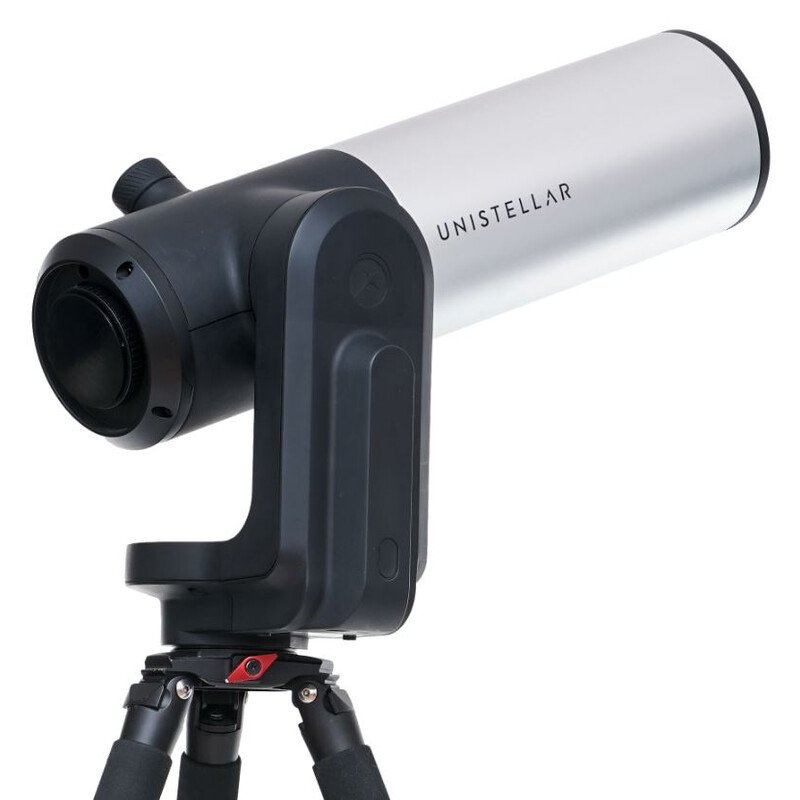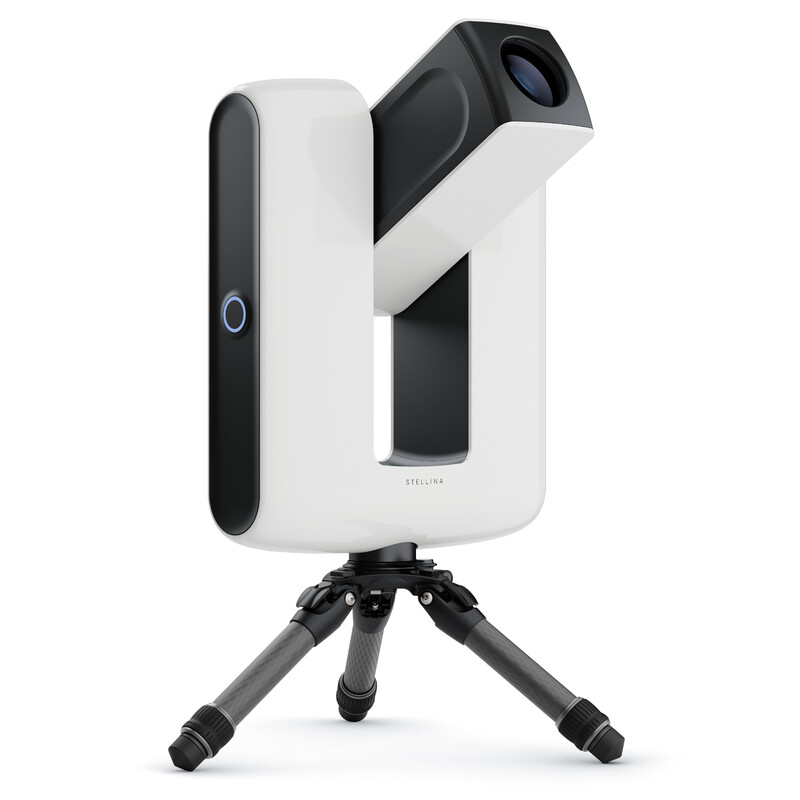Astronomy in combination with high-end technology: Stellina and eVscope in overview
High-resolution globular clusters and deep-sky images rich in detail - all at the touch of a button. We present the innovative telescopes from Vaonis and Unistellar.
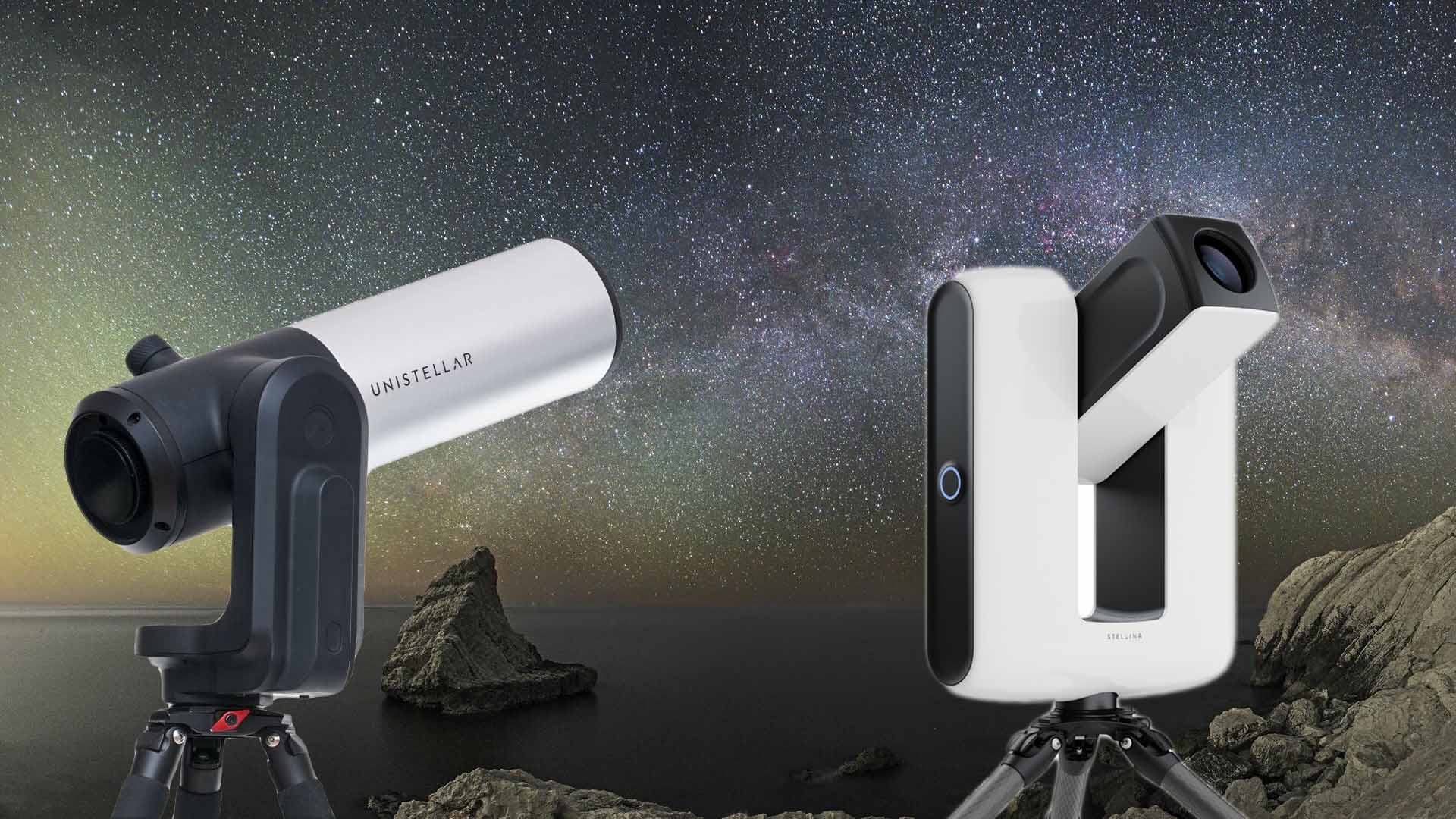
Tablets and smartphones are becoming commonplace in many areas of our lives and are often invaluable, for example for browsing the Internet on the go, or watching TV series on the way to work. However, in astronomy it is rare to see good smartphone integration. So how could smartphones and telescopes be perfectly connected with one another?
With the Vaonis Stellina and the eVscope from Unistellar, there are now two unique and innovative telescopes on the market that do just that. Thanks to features such as automatic alignment or live stacking, they allow even beginners to observe and photograph difficult-to-find deep sky objects. But how do they perform in practice?
Unistellar eVscope
This telescope is a Newtonian with a 114-mm aperture and 450-mm focal length. Detailed instructions and a two-part design ensure that the device is easy to set up – there is just a tripod and a telescope with a mount. The device must be first be charged before you can begin observing. Adapters for all countries are included, so you can plug it into any socket. Charging is an important keyword here since, unlike most classic mounts, the device does not require an external power supply. Instead, with its built-in battery, it provides up to 4 hours of observing time.
The associated app is quickly installed on your smartphone or tablet and set up in just a few minutes. The connection with the telescope is stable, but we recommend that you do not close the app, as this may cause problems and you may need to reconnect later.
Once set up, the telescope can easily be moved into position ready for observing, and the set-up at the observation site is simple even when it has been disassembled prior to transportation. In addition, the device can be adjusted quickly using the focusing mask included, so you’re ready to go.
You can use the app on your smartphone to either select objects yourself that the telescope should point to, or to define targets in advance. What’s special: you don’t need to orient the telescope with the pole star, nor do you need to align with one or more stars, because the telescope recognises star formations as well as your location, and so can find its way around the night sky perfectly. Once found, the object remains centred in the field of view thanks to automatic tracking.
Another feature of the eVscope is the way you observe. The smartphone display allows you to view both the photography settings and the finished image. But you can also use the telescope eyepiece to view a second screen that displays this same image. This gives you the feeling of looking through a classic telescope. The longer you look at the image, the sharper the object begins to appear. This is achieved because the Unistellar superimposes multiple images, taken automatically, one on top of the other. This method is called "stacking" and is common to astrophotography, although usually when imaging the stacking only happens after the observation, and thus does not offer the experience of live observation.
The telescope also offers the possibility to save the images acquired. Information about exposure time, date and time of recording, as well as the location coordinates are displayed in an automatically added frame along with the Unistellar logo.
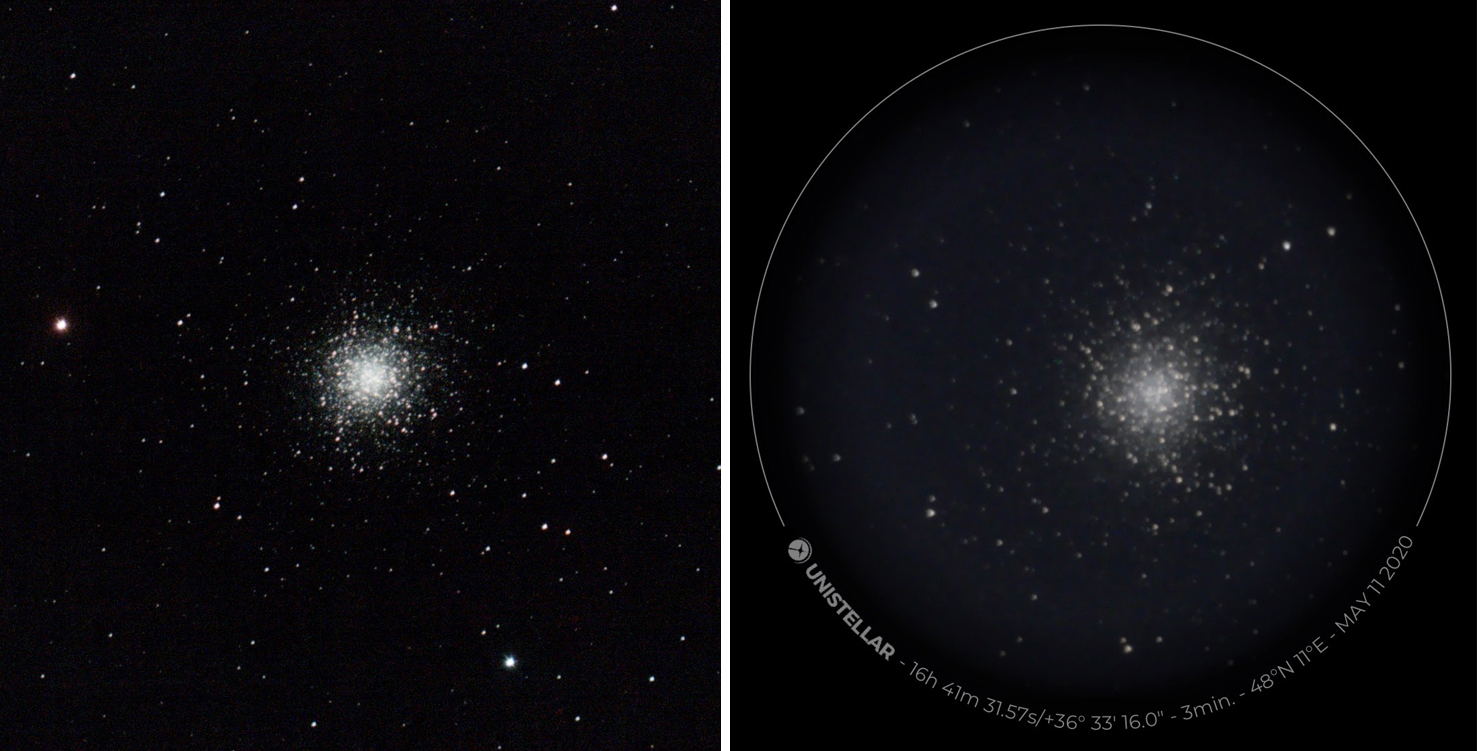 Comparison between the Stellina and eVscope using the M13 globular cluster. Exposure time: Vaonis 25 minutes, Unistellar 3 minutes
Comparison between the Stellina and eVscope using the M13 globular cluster. Exposure time: Vaonis 25 minutes, Unistellar 3 minutes Vaonis Stellina
Compared to the Unistellar, the Vaonis is an apochromatic refractor with an 80-mm aperture and 400-mm focal length. Here, too, the two-part telescope is easy to set up.
The removable battery is a plus, since you can take a second, fully charged battery with you, thereby increasing your observing time. Charging is done via any conventional socket, or alternatively the Stellina can also be permanently powered over a USB-C connection. This allows external power banks to be used to operate the telescope.
The app is easy to use, and reliably connects to the device. Pre-recorded images of all stored objects make it easier to select targets.
Once selected, the Stellina, just like the eVscope, automatically pans to the target. The telescope knows exactly where it is in the sky, without lengthy alignment, thanks to automatic location detection and recognition of stellar fields. Once the object is found, it is tracked reliably and precisely. Finding the object is just as quick as with the Unistellar. The only difference is that the eVscope displays the image continually, whereas with the Unistellar a loading screen is displayed, which then disappears when the object is located.
The Stellina has no eyepiece, you see everything on your smartphone screen. The live stacking seen on the Unistellar is also available here. You’ll get images of deep sky objects, rich in detail, which become ever more beautiful, depending on the length of the exposure. Planets are particularly good to photograph with this wide-field refractor.
Just like with the eVscope, you can also save images, but you don’t get the information frame.
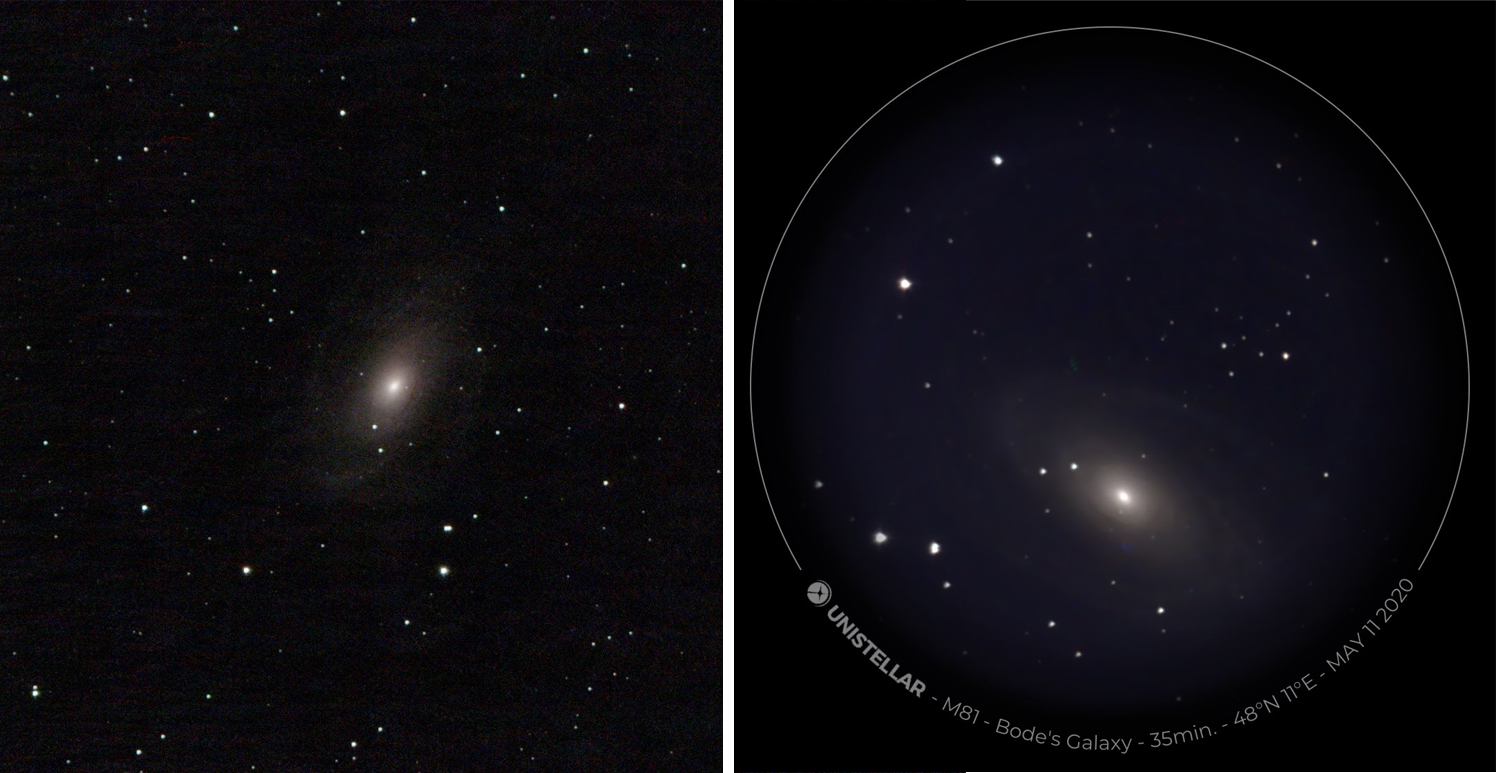 Comparison of the two telescopes using the M81 galaxy. Exposure time: Vaonis 30 minutes, Unistellar 35 minutes.
Comparison of the two telescopes using the M81 galaxy. Exposure time: Vaonis 30 minutes, Unistellar 35 minutes. Summary
Both telescopes offer a simple introduction to visual and photographic astronomy by way of a smartphone interface. Both impress with their features such as live stacking, automatic alignment and ease of use.
The differences in image quality and exposure time are consistent with other lens and mirror telescopes. If you are more likely to observe deep sky objects and want to see high-resolution star clusters with shorter exposure times, you should go for the eVscope. For planet fans, the Stellina is better suited. However, even with the Stellina, being a wide-field refractor, good deep sky images can be obtained, just as good planetary images can be produced with the eVscope.
But if you want to have the experience of looking through a real eyepiece, you should opt for the eVscope. The Stellina is more of a photography telescope for astronomers who want to avoid elaborate astrophotography configurations.
If you are a big technology fan, or if you want to produce beautiful images without much effort, then both devices certainly guarantee a lot of fun.
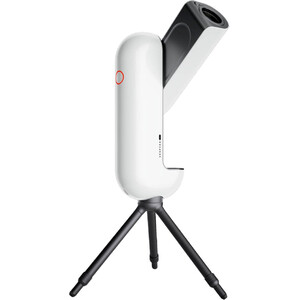
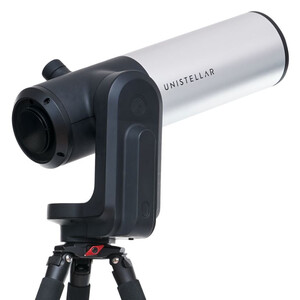
Authors: Alessandro Messina and Sebastian Brummer

